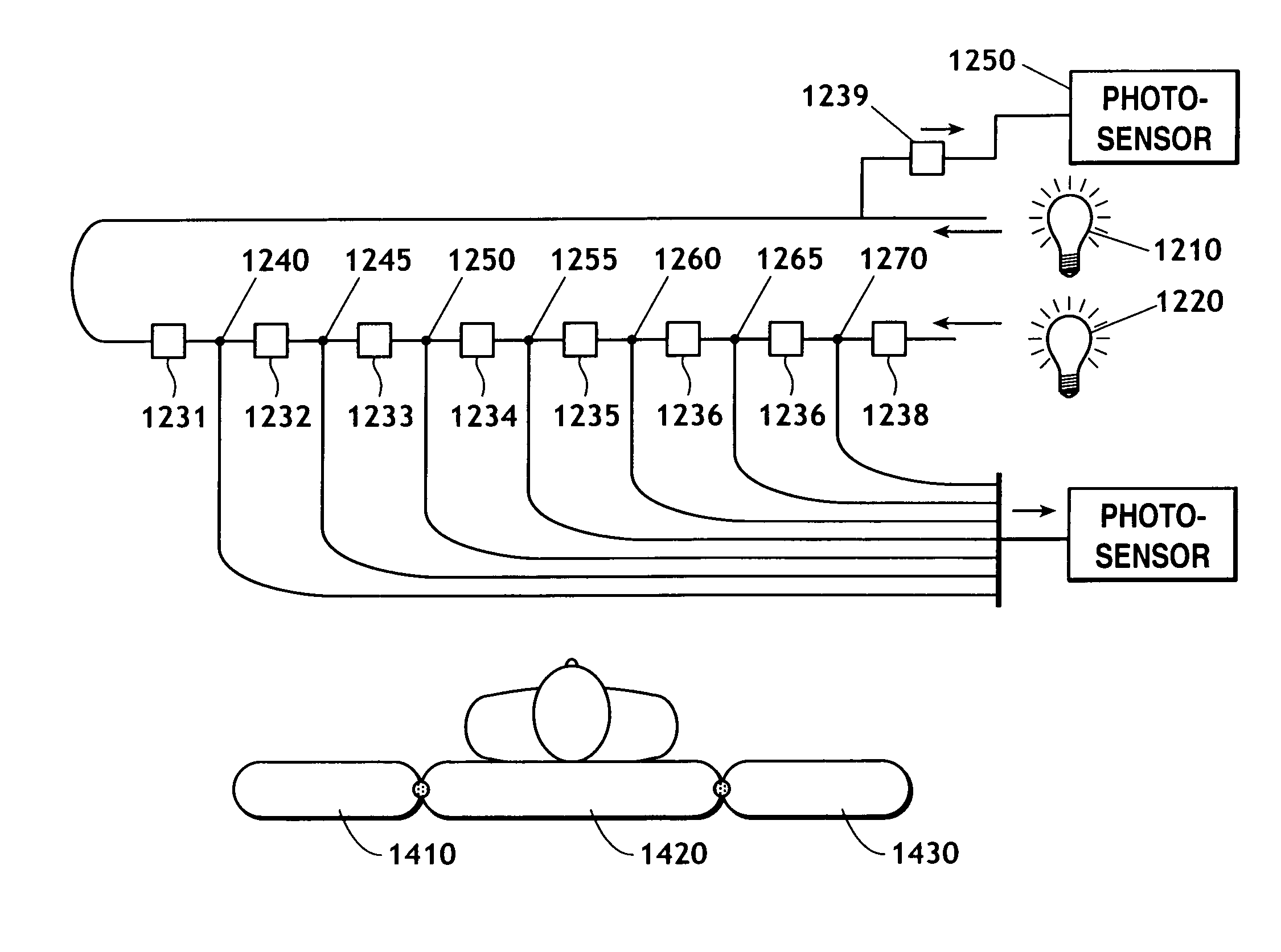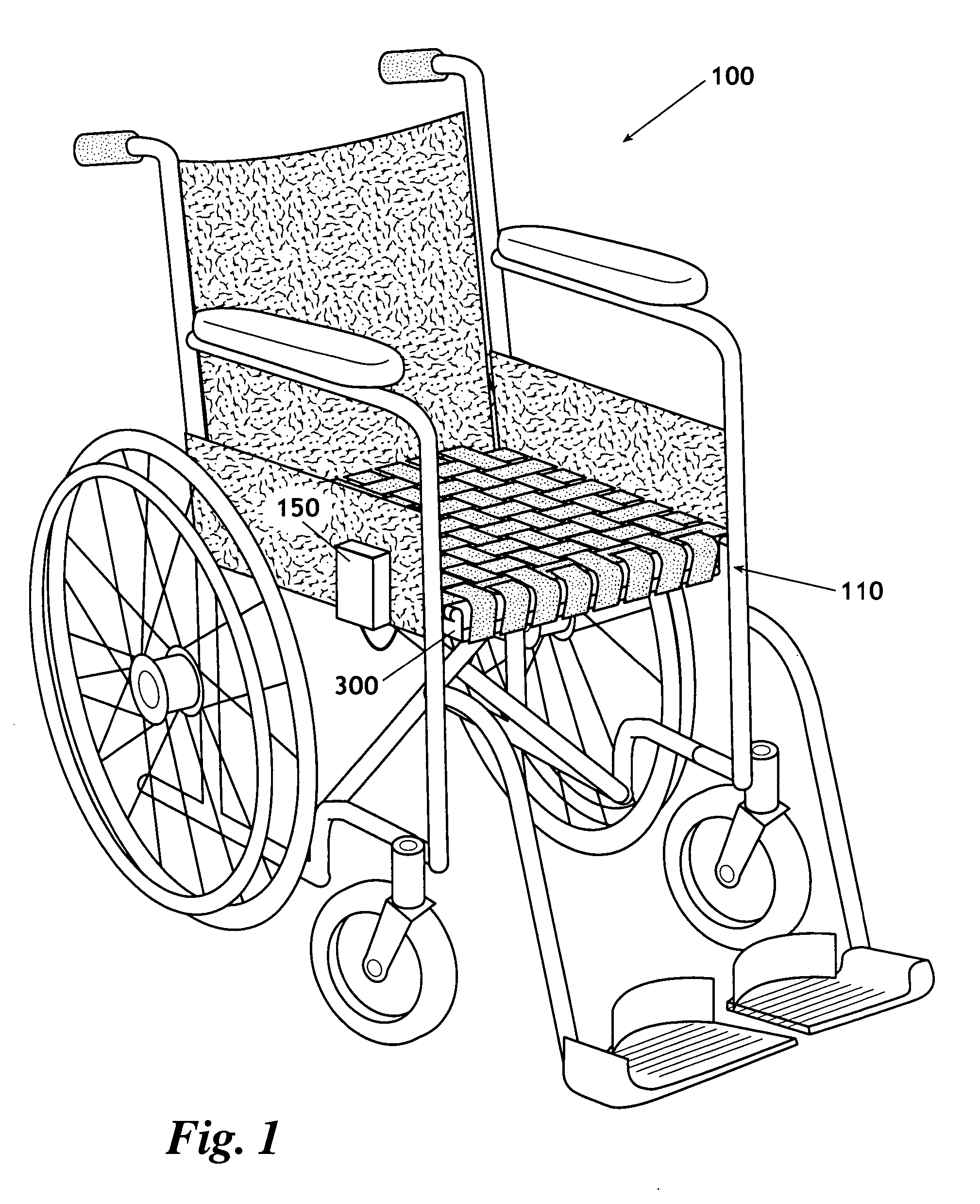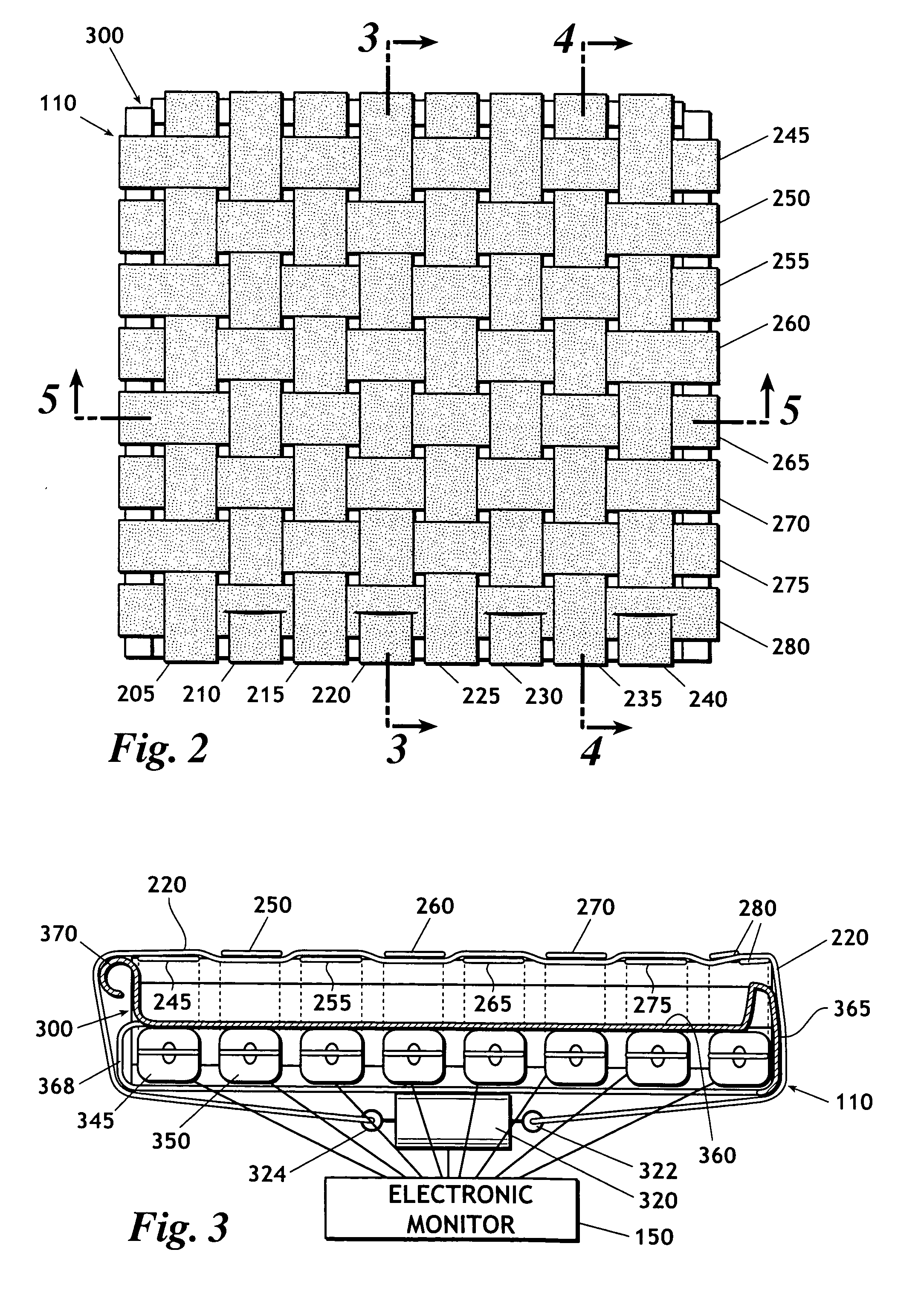Feedback control system to reduce the risk of pressure sores
- Summary
- Abstract
- Description
- Claims
- Application Information
AI Technical Summary
Benefits of technology
Problems solved by technology
Method used
Image
Examples
Embodiment Construction
[0045] In accordance with a first preferred aspect of the instant invention, there is provided a support surface such as a bed or chair which supports the patient with a plurality of relatively inelastic straps preferably arranged in a lattice configuration. Preferably, the tension in each of the support straps can be independently sensed and adjusted. Further, and preferably, each support strap will contain a plurality of sensors therein to allow an attached electronic monitor (preferably a monitor that contains a microprocessor or similar programmable device) to determine in real time the amount of pressure or tension (or the duration of the pressure or tension) applied to each strap. Based on that information, the attached monitor will periodically cause an attached worm gear motor or similar device to increase or increase the tension in each strap by lengthening or shortening selected ones thereof. Preferably, the tension on each strap will be independently readable and controll...
PUM
 Login to View More
Login to View More Abstract
Description
Claims
Application Information
 Login to View More
Login to View More - R&D
- Intellectual Property
- Life Sciences
- Materials
- Tech Scout
- Unparalleled Data Quality
- Higher Quality Content
- 60% Fewer Hallucinations
Browse by: Latest US Patents, China's latest patents, Technical Efficacy Thesaurus, Application Domain, Technology Topic, Popular Technical Reports.
© 2025 PatSnap. All rights reserved.Legal|Privacy policy|Modern Slavery Act Transparency Statement|Sitemap|About US| Contact US: help@patsnap.com



